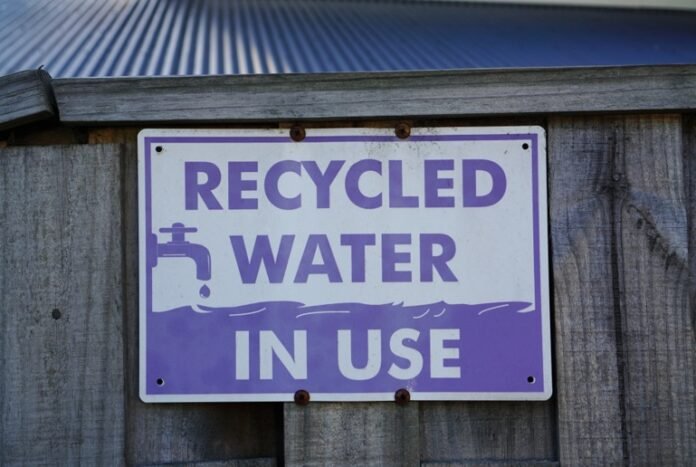Water conservation is more important now than ever, affecting both our environment and wallets. Every drop we save helps protect our precious water resources and lightens the financial load of our utility bills. An average household in Australia uses approximately 340 litres of water daily, but with a few adjustments, significant savings can be achieved. The concept of reducing your water footprint isn’t just a trend; it’s a sustainable lifestyle choice that offers tangible benefits. By following simple water-saving tips, households can experience a reduced water bill and contribute to the preservation of our planet’s resources.
Fix Leaks Around Your Home
Leaks are sneaky culprits of wasted water and inflated utility bills. Common areas prone to leaks include faucets, toilets, and pipes — each with the potential to waste gallons of water daily if not addressed. To detect hidden leaks in your plumbing system, turn off all water sources and check your water meter. If the meter continues to change, it might indicate a leak. Even small drips can add up over time, driving up your costs unexpectedly.
Easy DIY fixes can tackle many leaks before professional help is required. Replacing a worn washer in a faucet, tightening pipe joints, or adjusting the flapper in a toilet tank can remedy many leak issues. Addressing leaks promptly not only conserves water but also saves money on your next water bill.
Upgrade to Water-Efficient Fixtures
Using water-efficient fixtures can make a noticeable difference in household water usage. WaterSense labelled products are designed to use at least 20% less water than standard models, without compromising performance. Installing low-flow showerheads and faucet aerators can significantly reduce water flow, thereby reducing overall usage while maintaining a satisfying water pressure experience.
Swapping out older toilets for water-efficient versions can lead to considerable savings, as they utilise much less water per flush. While the initial costs of these upgrades might seem steep, the return on investment (ROI) is quickly realised through lower utility bills. Over time, the savings will offset the upgrade costs, making water-efficient appliances a sound financial decision.
Mindful Water Use Practices
Simple behavioural changes in daily routines can greatly decrease water consumption. Turning off the tap while brushing teeth or washing dishes is a habit that can significantly reduce unnecessary water flow. When handwashing dishes, fill one sink or basin with soapy water for washing and the other with clean water for rinsing, rather than allowing the tap to run continuously.
Reducing shower time by just a few minutes can conserve a substantial amount of water. Setting a timer or playing a short song can serve as a fun reminder to stay efficient. For lawn and garden watering, it’s important to consider timing and methods. Watering early in the morning or late in the evening reduces evaporation, while using drip irrigation or soaker hoses delivers water directly to plant roots, ensuring efficiency. For more simple water-saving tips, explore additional methods that can help conserve water in ways that suit your lifestyle and environment.
Reuse and Recycle Water When Possible
Innovative methods like greywater systems can capture and reuse water from sinks, baths, and washing machines. This recycled water can then be used for flushing toilets or watering lawns, which conserves a significant amount of potable water.
Harnessing rainwater is another sustainable practice. Rain barrels or tanks can collect rainwater for use in gardening or outdoor cleaning tasks, reducing dependency on tap water. Additionally, rinse water from washing vegetables can be safely collected in a basin and repurposed for watering non-edible plants.
However, be sure to consider legal guidelines and local regulations before implementing water reuse strategies. Many areas have specific rules to ensure safe and environmentally sound practices.
Educate Your Family and Community
Water conservation begins at home and flourishes in communities. Engaging children in fun activities like water-saving games or challenges can teach them the importance of conservation from a young age. Starting or joining local initiatives focused on water conservation can not only raise awareness but also provide communal support and resources.
Sharing knowledge with neighbours through tips or group discussions can foster a community that values conservation. Fostering open family discussions about water usage goals and tracking progress together can keep everyone motivated to continue adopting water-saving habits.
Conclusion
Taking small, actionable steps can make a world of difference in conserving water and cutting costs. By fixing leaks, upgrading fixtures, adopting mindful water practices, reusing water, and educating others, households can significantly reduce their water consumption. Emphasising the dual benefits of environmental stewardship and financial savings can motivate sustained efforts in water conservation. For those looking to further explore water-saving techniques, additional resources and local programs can offer invaluable guidance. It’s time to commit to implementing at least one new water-saving habit this month and make a positive impact on both personal budgets and the planet.
















